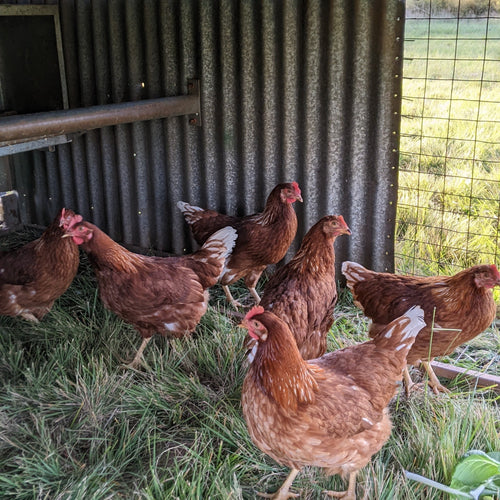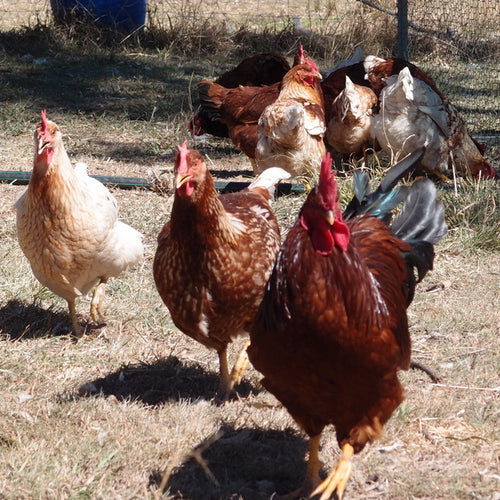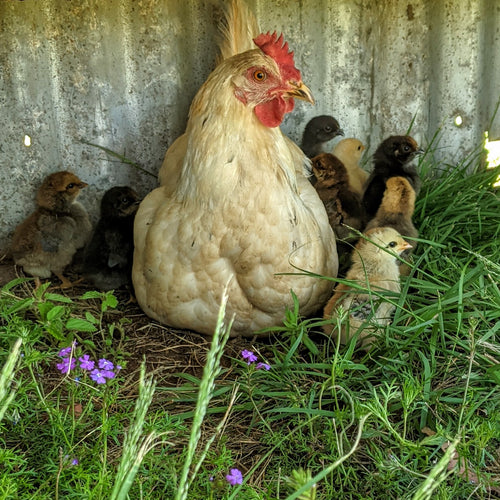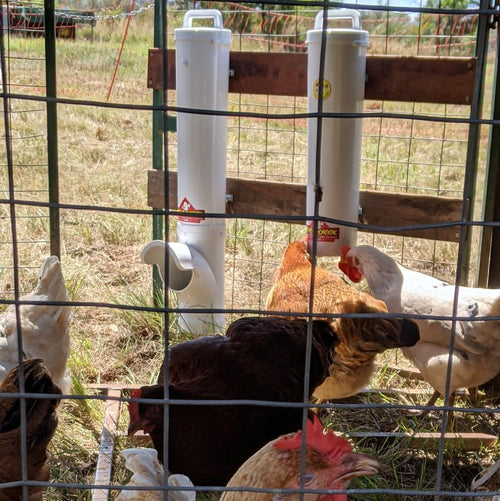Incubating chicken eggs
In the past we have had varying success with incubating chicken eggs. This time last year I really wanted to improve our hatch rate and I did some research. What I found out was that there are lots of things that can affect the hatch rate. Here's how we changed the way we did things and increased our hatch from 5 out of 48 to 34 out of 48.
I should also say, that it would be more in keeping with permaculture principle "obtain a yield" for us to let a broody hen do the work of hatching and raising chicks, but incubating gives us more control over the process, even if it is more work.
Humidity should be 55-65% for the first 18 days, then 80% for the last 3 days (stop turning at day 18 as well, so the chick can get ready to hatch).
The eggs should be turned 2-3 times per day, more often if possible, either tapered end facing down, or egg on its side.
We suspected that our incubator temperature control might have been a little dodgy, so we put a digital thermometer in the incubator as well. It always pays to measure things in a couple of ways. It still might be a little hot, as all the chicks popped out two days early, so that is something to adjust for next time. Our incubator controls the humidity based on the day counter, and one of our bad hatches was when I accidentally reset the counter half way through, so the humidity was never increased at the end of the incubation. If your incubator doesn't have a humidity control, it helps to buy a digital humidity meter so you can get this part right. Our incubator rocks the eggs in a cradle, every 2 hours, so that is plenty of turning.
We didn't have a chance to label the eggs this time, as my father-in-law collected them while we were on holiday.
Make sure your chickens are getting all the minerals and nutrients they need for fertility.
After we figured out that the hens were eating their eggs due to lack of minerals, I have been making a real effort to give them shell grit and minerals. The egg shells are noticeably thicker, which means the shell can protect the developing chick. The extra minerals may have also helped with fertility and viability of the chick if there was a deficiency previously.
Some other aspects that I have since thought about and didn't cover previously:
Have enough roosters for the number of hens - just to make sure that no hens are "missing out"
We currently have three Rhode Island Red roosters and 16 hens (8 Rhode Island Red, 7 White Leghorns and 1 cross). Previously we only had one rooster for this many hens, so I'm sure that has made a difference.
Choose only clean dry eggs to incubate.
Previous bad hatches have been after we returned from weekends away to find nests full of eggs and just chucked them all in the incubator, sometimes they had been damp from rainy weather. The eggs have a better chance if they are clean and dry. I have been trying really hard to keep the nest boxes clean, so that the eggs stay clean, and we only put the best clean eggs in the incubator this time. As my father-in-law collected the eggs regularly through the day, they didn't have a chance to get wet or dirty in the nest.
Do you have any tips to improve hatch-rate?
I should also say, that it would be more in keeping with permaculture principle "obtain a yield" for us to let a broody hen do the work of hatching and raising chicks, but incubating gives us more control over the process, even if it is more work.
Temperature control is the most important aspect of incubation, it must be 38degC to half a degree.
Humidity should be 55-65% for the first 18 days, then 80% for the last 3 days (stop turning at day 18 as well, so the chick can get ready to hatch).
The eggs should be turned 2-3 times per day, more often if possible, either tapered end facing down, or egg on its side.
We suspected that our incubator temperature control might have been a little dodgy, so we put a digital thermometer in the incubator as well. It always pays to measure things in a couple of ways. It still might be a little hot, as all the chicks popped out two days early, so that is something to adjust for next time. Our incubator controls the humidity based on the day counter, and one of our bad hatches was when I accidentally reset the counter half way through, so the humidity was never increased at the end of the incubation. If your incubator doesn't have a humidity control, it helps to buy a digital humidity meter so you can get this part right. Our incubator rocks the eggs in a cradle, every 2 hours, so that is plenty of turning.
Label the eggs with date and rooster to make fault-finding easier.
Candle the eggs to check for embryo development - remove clear eggs after around 10 days - also candle eggs that didn't hatch to check if they had any development.
We didn't have a chance to label the eggs this time, as my father-in-law collected them while we were on holiday.
Make sure your chickens are getting all the minerals and nutrients they need for fertility.
After we figured out that the hens were eating their eggs due to lack of minerals, I have been making a real effort to give them shell grit and minerals. The egg shells are noticeably thicker, which means the shell can protect the developing chick. The extra minerals may have also helped with fertility and viability of the chick if there was a deficiency previously.
Some other aspects that I have since thought about and didn't cover previously:
Have enough roosters for the number of hens - just to make sure that no hens are "missing out"
We currently have three Rhode Island Red roosters and 16 hens (8 Rhode Island Red, 7 White Leghorns and 1 cross). Previously we only had one rooster for this many hens, so I'm sure that has made a difference.
Choose only clean dry eggs to incubate.
Previous bad hatches have been after we returned from weekends away to find nests full of eggs and just chucked them all in the incubator, sometimes they had been damp from rainy weather. The eggs have a better chance if they are clean and dry. I have been trying really hard to keep the nest boxes clean, so that the eggs stay clean, and we only put the best clean eggs in the incubator this time. As my father-in-law collected the eggs regularly through the day, they didn't have a chance to get wet or dirty in the nest.
Do you have any tips to improve hatch-rate?























Leave a comment